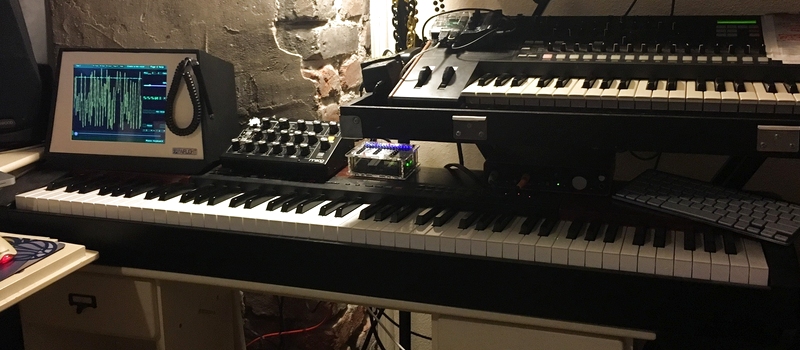[Davearneson] built a modern version of a classic synthesizer with his DIY Fairlight CMI. If there were a hall of fame for electronic instruments, the Fairlight CMI would be on it. An early sampling synth with a built-in sequencer, the Fairlight was a game changer. Everyone from A-ha to Hans Zimmer has used one. The striking thing about the Fairlight was the user interface. It used a light pen to select entries from text menus and to interact with the audio waveform.
The original Fairlight units sold for £18,000 and up, and this was in 1979. Surviving units are well outside the price range of the average musician. There is an alternative though – [Peter Vogel] has released an iOS app which emulates the Fairlight.
[Davearneson] had an old iPad 2 lying around. Too slow to run many of the latest apps, but just fast enough to run the Fairlight app. An iPad doesn’t exactly look like a classic instrument though. So he broke out the tools and created a case that looked the part.
The front of the case is made of framing mat board. The rest of the shell is wood. [Davearneson] used Plasti-Dip spray to replicate the texture of 1970’s plastics. The audio interface is a Griffon unit, which provides audio and MIDI connections. [Davearneson] extended the connections from the Griffon to the rear of the case, making for a clean interface.
The iPad doesn’t exactly support a light pen, so a rubber tipped stylus on a coil cord takes it place. The result is a device that looks and works like a Fairlight – but doesn’t need a steady diet of 8″ floppy discs to operate.
Interested in classic digital synthesizers that are a bit more budget friendly? Check out Al Williams’ article on the SID chip, or this 3D printed synth based upon the 4046 PLL chip.















This reminds me of listening to Art of Noise when I was a teenager.
I love the reinterpreted interface and keeping the classic look of the Fairlight. I am also very happy that it doesn’t cost what a Fairlight does :) Great job, Dave!
Unfortunately the iPad app doesn’t support one of the neatest features of the Fairlight, the ability to use the light pen to edit sample waveforms. The app lets you, at best, edit the looping of the samples.
Whoa. My information was out of date. They’ve added some waveform editing at some point. Woo!
The app is worth getting just for the sample collection. Once you figure out the interface, which is not terrible but a bit non-intuitive, you can put together some awesome music.
And paying $50 for the Pro version (or in-app purchase upgrade from the non-Pro version) gets you the samples from the Fairlight Series III.
$50 is pretty steep for an iPad app, but it’s still much cheaper than an actual Fairlight would cost.
The only sample you really need is ORCH5
in 2020 you can get better alternatives to this Ipad application like QasarBeach, which can run standalone on a normal PC and is free
https://adamstrange.itch.io/qasarbeach
Communication group:
https://www.facebook.com/groups/277208163443745